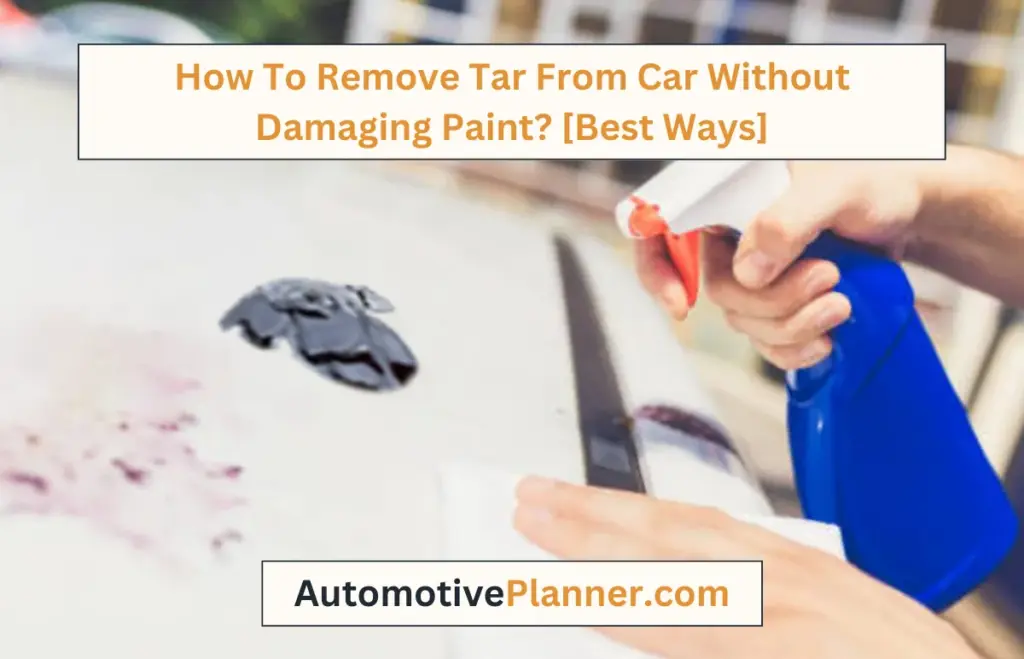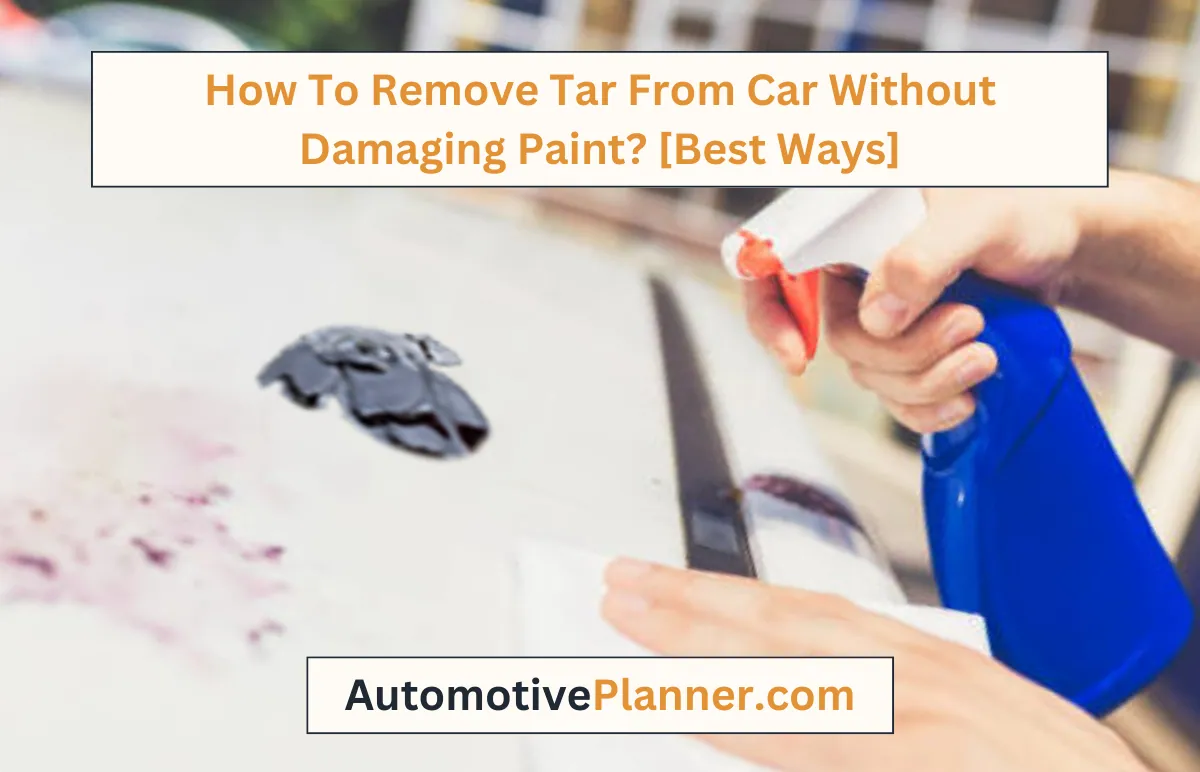
The Best Way to Remove Bugs from Your Car Without Damaging the Paint
Summer road trips are a quintessential part of the American experience. But with those long drives come inevitable encounters with insects. Bugs splattered across your car’s front end are not only unsightly but can also seriously damage your paint if left untreated. Insect remains are acidic and can etch into the clear coat, leading to permanent blemishes. This article provides a comprehensive guide on the best way to remove bugs from your car without damaging the paint, ensuring your vehicle stays pristine.
Why Bug Removal is Crucial for Your Car’s Paint
Bug guts contain enzymes and acids that can eat away at your car’s clear coat. The longer these remains sit on your car, especially under the heat of the sun, the more likely they are to cause permanent damage. This damage can manifest as etching, staining, and even peeling paint. Regularly removing bug splatter is, therefore, an essential part of car maintenance, preserving its resale value and aesthetic appeal.
Understanding the Enemy: What Makes Bug Splatter So Harmful?
The composition of bug remains is the primary culprit. Insects contain a cocktail of proteins, fats, and acids. When these substances dry and bake onto your car’s surface, they become incredibly difficult to remove and actively work to degrade the paint’s protective layers. Furthermore, the impact of the bug itself can cause microscopic scratches, providing entry points for corrosive substances. Ignoring bug splatter is akin to leaving corrosive chemicals on your car’s paint – a recipe for disaster.
The Ultimate Guide to Removing Bugs Safely
Here’s a step-by-step guide to the best way to remove bugs from your car without damaging the paint:
Step 1: The Initial Rinse
Start by rinsing your car with a strong stream of water. This will loosen some of the bug remains and remove any loose debris that could scratch the paint during the cleaning process. A pressure washer can be helpful, but be careful not to hold it too close to the paint, as the high pressure can cause damage. Focus on the areas most affected by bug splatter, such as the front bumper, hood, and side mirrors.
Step 2: Apply a Bug Remover
Several specialized bug remover products are available on the market. These are designed to dissolve bug remains without harming the paint. Look for products that are pH-neutral and specifically formulated for automotive use. Spray the bug remover liberally onto the affected areas and let it dwell for the recommended time, usually a few minutes. Do not allow the product to dry on the surface.
Some popular and effective bug removers include:
- Chemical Guys Bug Bugger: Known for its effective formula and ease of use.
- Griot’s Garage Bug & Smudge Remover: A high-quality option that’s safe for all automotive surfaces.
- McKee’s 37 Road Kill Bug Remover: Specifically designed for heavy bug infestations.
Step 3: Gentle Scrubbing
After the bug remover has had time to work, use a soft sponge, microfiber cloth, or bug removal pad to gently scrub the affected areas. Avoid using abrasive materials, as these can scratch the paint. Apply light pressure and work in small sections. Rinse the sponge or cloth frequently to remove any dislodged bug remains.
Step 4: Thorough Rinsing
Once you’ve scrubbed all the affected areas, rinse your car thoroughly with water to remove all traces of the bug remover and bug remains. Make sure to rinse all crevices and hard-to-reach areas. A strong stream of water is ideal for this step.
Step 5: Wash Your Car
After rinsing, wash your car with a quality car wash soap and a clean microfiber wash mitt. This will remove any remaining residue and ensure a clean surface. Use the two-bucket method to minimize the risk of scratching the paint. [See also: The Two-Bucket Wash Method Explained]
Step 6: Drying
Dry your car with a clean microfiber drying towel. Avoid using paper towels or other abrasive materials, as these can scratch the paint. Pat the surface dry rather than wiping, to minimize friction. Alternatively, you can use a leaf blower or air compressor to blow dry the car.
Step 7: Apply Wax or Sealant
After drying, apply a coat of wax or sealant to protect your car’s paint. This will create a barrier between the paint and the elements, making it easier to remove bug splatter in the future. Choose a wax or sealant that is specifically designed for automotive use.
Alternative Bug Removal Methods
While specialized bug removers are the best way to remove bugs from your car without damaging the paint, several alternative methods can be effective in a pinch:
- Baking Soda Paste: Mix baking soda with water to create a paste. Apply the paste to the affected areas and let it sit for a few minutes before gently scrubbing and rinsing. Be cautious, as baking soda can be mildly abrasive.
- WD-40: WD-40 can be effective at dissolving bug remains. Spray it onto the affected areas, let it sit for a few minutes, and then wipe it off with a clean cloth. Be sure to wash your car afterward to remove any WD-40 residue.
- Dryer Sheets: Wet a dryer sheet and gently rub it over the bug splatter. The fibers in the dryer sheet can help to lift the bug remains without scratching the paint.
- Soaked Towel Method: Soak a microfiber towel in warm water and lay it over the affected area for several minutes. The warm water will help to loosen the bug remains, making them easier to remove.
Preventing Bug Splatter: Proactive Measures
Prevention is always better than cure. Here are some proactive measures you can take to minimize bug splatter and protect your car’s paint:
- Apply a Paint Protection Film (PPF): PPF is a clear, self-healing film that can be applied to your car’s paint. It provides a physical barrier against bug splatter, scratches, and other damage. [See also: The Benefits of Paint Protection Film]
- Use a Car Bra: A car bra is a protective cover that fits over the front of your car. It can help to deflect bugs and other debris, preventing them from hitting the paint.
- Regular Waxing: Regularly waxing your car creates a protective layer that makes it easier to remove bug splatter.
- Drive Defensively: Avoid driving directly behind trucks or other vehicles that are likely to kick up bugs and debris.
Common Mistakes to Avoid
When removing bugs from your car, avoid these common mistakes:
- Using Abrasive Materials: Never use abrasive materials such as steel wool, scouring pads, or harsh brushes to remove bug splatter. These can scratch the paint.
- Letting Bug Remover Dry: Never let bug remover dry on your car’s surface. This can cause staining and damage.
- Applying Too Much Pressure: Avoid applying too much pressure when scrubbing. Let the bug remover do the work.
- Ignoring the Problem: The biggest mistake is ignoring bug splatter altogether. The longer you wait to remove it, the more likely it is to cause permanent damage.
Conclusion: Keeping Your Car Bug-Free
Removing bugs from your car is an essential part of maintaining its appearance and protecting its paint. By following the steps outlined in this guide, you can ensure that you’re using the best way to remove bugs from your car without damaging the paint. Remember to use gentle methods, avoid abrasive materials, and take proactive measures to prevent bug splatter in the first place. With a little care and attention, you can keep your car looking its best, mile after mile. Regular maintenance, including prompt bug removal, will also help maintain your vehicle’s resale value. So, the next time you return from a road trip covered in bug guts, don’t delay – get to cleaning!

